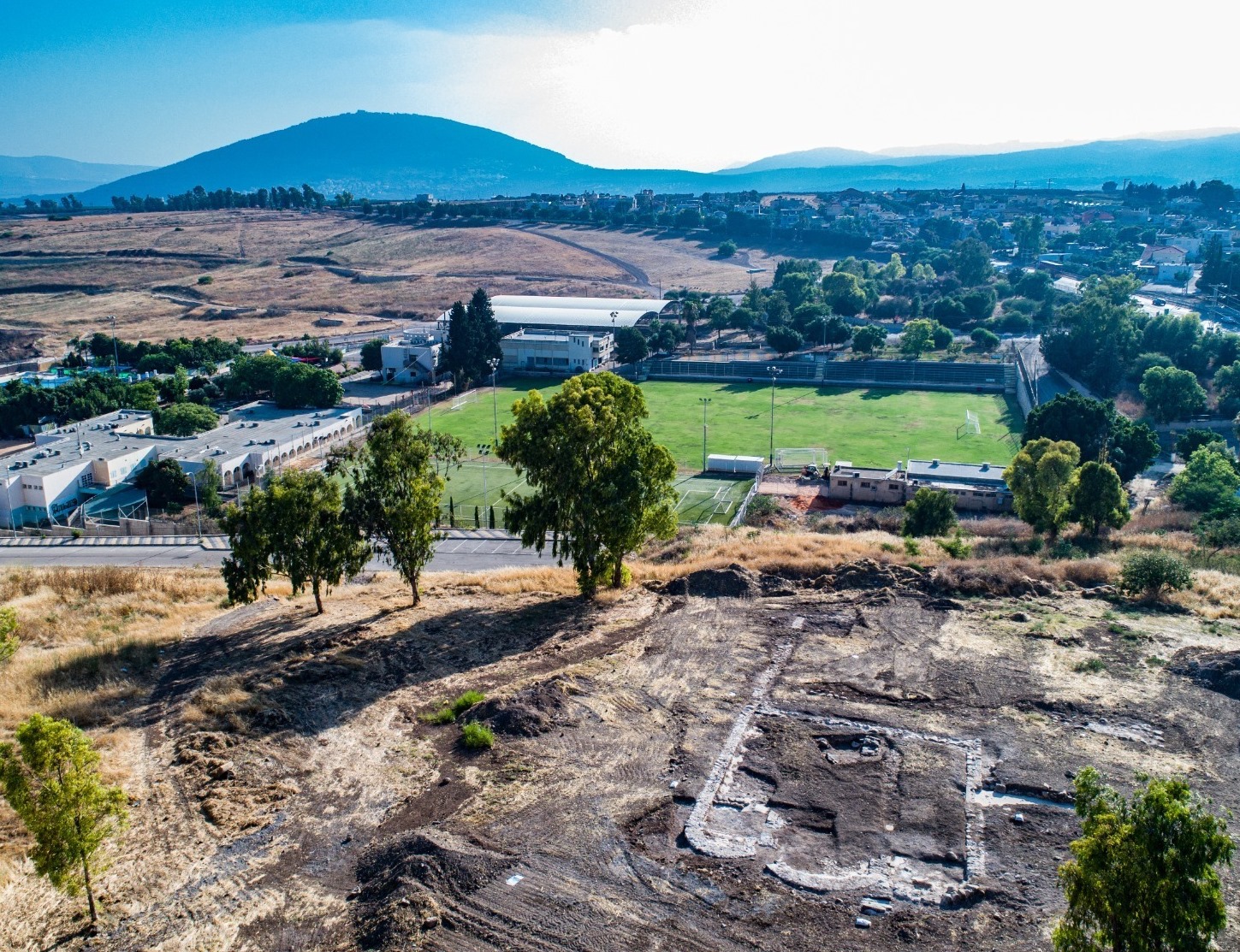Culture
A 1,300-year old church was uncovered in the village of Kfar Kama, near Mount Tabor
By Itzhak Rabihiya
The church was discovered in Kfar Kama, in archaeological excavations carried out by the Israel Antiquities Authority, in collaboration with the Kinneret Academic College and local volunteers . The discovery in the Galilee excited the Head of the Greek Catholic Church in Israel, who personally came to visit the site. The excavation was conducted prior to the construction of a playground, at the initiative of the Kfar Kama Local Council and the Jewish National Fund.
A 1,300-year old church, with ornate mosaic floors, was recently revealed in an excavation in the Circassian village of Kfar Kama, near Kfar Tabor, carried out by the Israel Antiquities Authority, in collaboration with the Kinneret Academic College, and with assistance from local volunteers. The Catholic Archbishop Dr. Youssef Matta, Head of the Greek Catholic Church in Israel, personally visited the site and was inspired by the ancient remains.
The excavation, directed led by archaeologist Nurit Feig on behalf of the Israel Antiquities Authority, and in collaboration with Prof. Moti Aviam of the Kinneret Academic College, took place prior to the building of a playground, initiated by the Kfar Kama Local Council and the Jewish National Fund.

According to Feig, “The church, measuring 12 × 36 m, includes a large courtyard, a narthex foyer, and a central hall. Particular to this church is the existence of three apses (prayer niches), while most churches were characterized by a single apse. The nave and the aisles were paved with mosaics which partially survived. Their colorful decoration stands out, incorporating geometric patterns, and blue, black, and red floral patterns. A special discovery was the small reliquary, a stone box used to preserve sacred relics.
An additional series of rooms was partially uncovered adjacent to the church. According to a ground-penetrating radar inspection operated by Dr. Shani Libbi, there are additional rooms at the site yet to be excavated. According to the researchers, “it is quite possible that this large complex was a monastery.” In the early 1960s, a smaller church with two chapels was excavated inside the village of Kfar Kama, and was dated by the finds to the first half of the sixth century CE. According to Prof. Moti Aviam, “this was probably the village church, whilst the church now discovered was probably part of a contemporary monastery on the outskirts of the village.”
The new discovery hints at the apparent importance of the Christian village settled in the Byzantine period close to Mount Tabor, a site of primary religious significance for Christianity, identified as the site of the Transfiguration. In 1876, when the Circassian Shapsug tribe first settled in Kfar Kama, they used the stones of the ancient village to build their houses.
The discovery of the church in Kfar Kama will contribute to the extensive research project on the Christian settlement in the Galilee that is being carried out by Prof. Moti Aviam and Dr. Jacob Ashkenazi of the Kinneret Institute of Galilean Archaeology in the Kinneret Academic College.
Photo: Alex Wiegmann, Israel Antiquities Authority
Stories for you more +